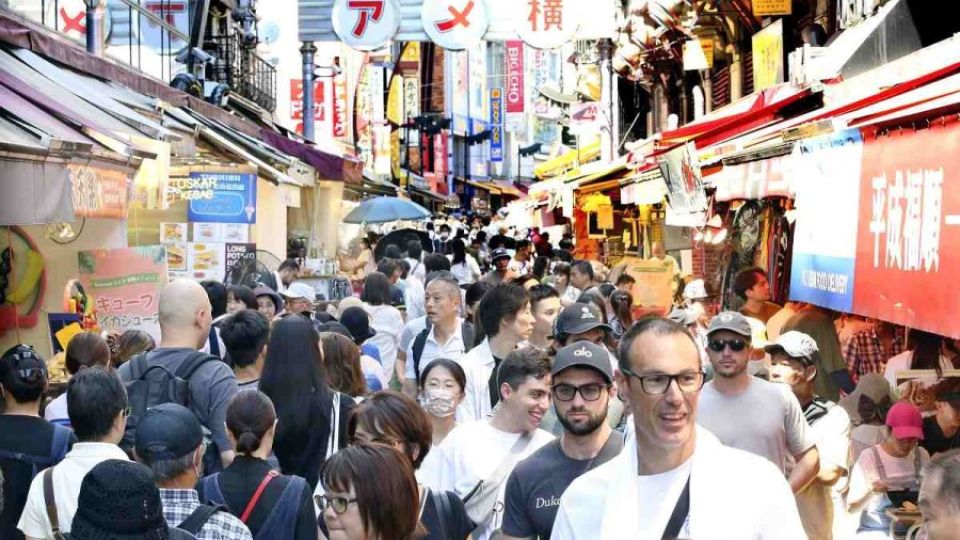August 17, 2023
TOKYO – Brisk exports boosted by a recovery in automobile production and spending by foreign tourists helped Japan’s gross domestic product mark 6% annualized growth in the April-June period, up for the third consecutive quarter in real terms.
However, consumer spending remained sluggish, fueling concerns over the reliance on foreign demand, as a slowdown in overseas economies could deal a blow to Japan’s economy.
In mid-August, the Ameyoko shopping street in Tokyo’s Ueno district was crowded with foreign tourists. A 53-year-old man visiting from Britain with three family members said prices in Japan were 30% cheaper than in other countries, allowing the family to travel comfortably.
The owner of Ameyoko Jiro, a sushi restaurant in the district, said: “We had to raise prices due to the higher cost of raw materials. But visitors to Japan are making up [for the negative impact].”
According to the Ameyoko shopping street federation, foot traffic on the street has returned to 80% of pre-COVID-19 pandemic levels.
China accounted for 30% of foreign visitors to Japan before the pandemic. The Chinese government lifted its ban on group tours to Japan on Aug. 10, raising hopes for a further recovery.
End of long tunnel
The number of foreign visitors to Japan in June returned to 70% of the figure seen in the same month of 2019, and their spending in the April-June period recovered to 95% of the same period in 2019.
“We’ve passed through a long tunnel. There’s a clear recovery in demand for international flights,” said Shinichi Inoue, president of All Nippon Airways Co.
The weak yen is also a key factor. Recently, the dollar has been in the ¥140 range, compared to around ¥110 in 2019. The average length of foreign visitors’ stay has increased by two days, and rising prices have also boosted the amount they spend.
According to an estimate by Saisuke Sakai, an economist of Mizuho Research & Technologies, Ltd., spending by foreign visitors buoyed real-term GDP for the April-June quarter by about 0.2% on an annual basis.
Automobile production recovered with the easing of the semiconductor shortage, also contributing to the nation’s GDP growth. Against the backdrop of upbeat exports, seven major automakers, including Toyota Motor Corp., reported record-high sales for the April-June quarter.
Risks from external factors
Japan’s economic growth, which relies on external demand, is affected by trends in overseas economies, such as China, which has increasingly shown signs of economic slowdown, and the United States, where the tightening of monetary policy has continued.
The Yomiuri Shimbun spoke to economists from 10 major private-sector research organizations on Tuesday, all of whom predicted Japan would see positive real growth for fiscal 2023. However, many also expressed concern about a decline in exports due to the global economic slowdown.
The International Monetary Fund expects global growth for the next five years to stand at around 3%, the lowest level since 1990. The U.S. economy remains strong, but adverse effects of monetary tightening could emerge as interest rates continue to rise.
“The effects of monetary tightening in the United States will emerge strongly in the future, and the downside risks will be significant,” said Takahide Kiuchi of Nomura Research Institute, Ltd.

